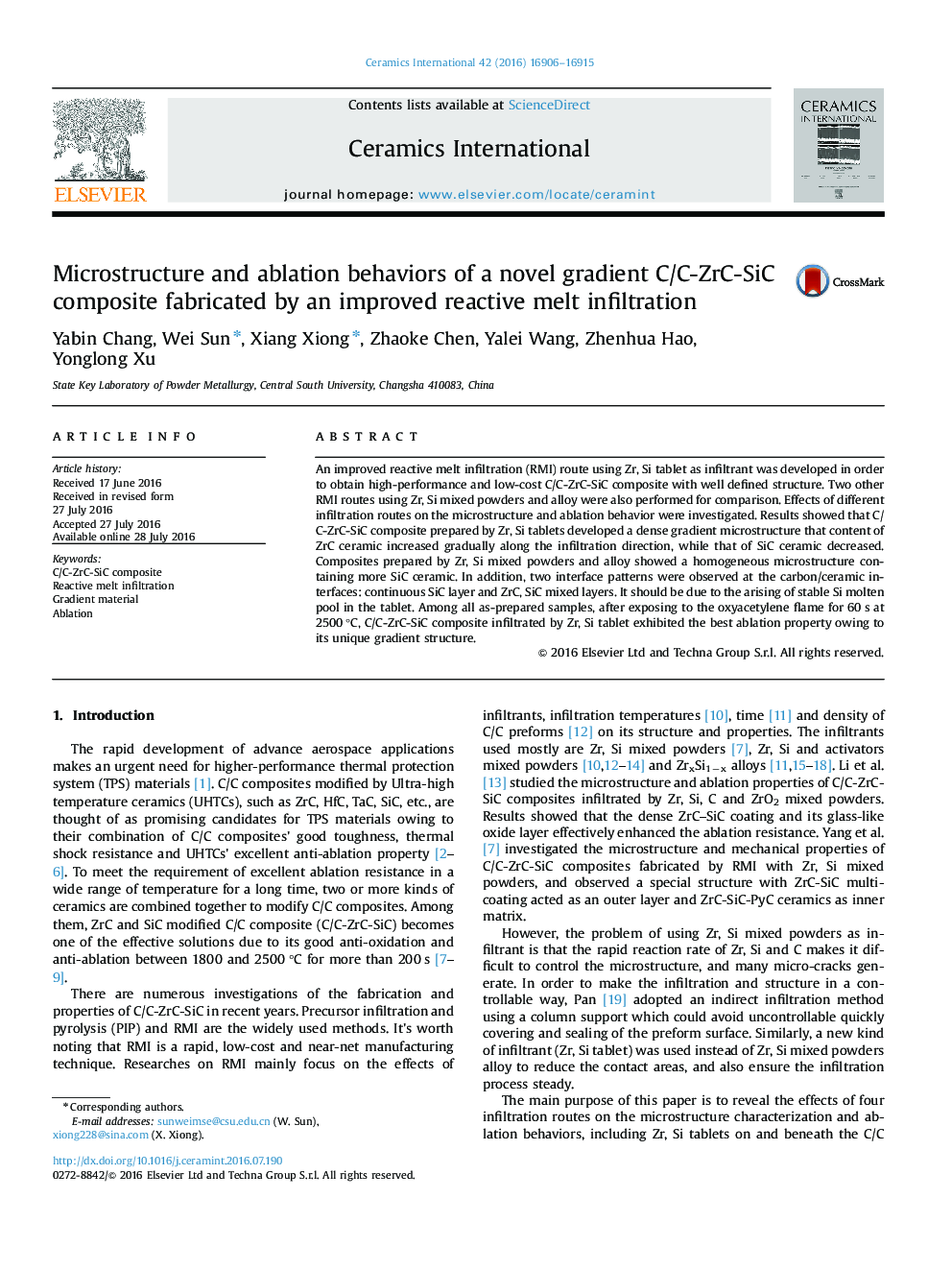| Article ID | Journal | Published Year | Pages | File Type |
|---|---|---|---|---|
| 5438745 | Ceramics International | 2016 | 10 Pages |
Abstract
An improved reactive melt infiltration (RMI) route using Zr, Si tablet as infiltrant was developed in order to obtain high-performance and low-cost C/C-ZrC-SiC composite with well defined structure. Two other RMI routes using Zr, Si mixed powders and alloy were also performed for comparison. Effects of different infiltration routes on the microstructure and ablation behavior were investigated. Results showed that C/C-ZrC-SiC composite prepared by Zr, Si tablets developed a dense gradient microstructure that content of ZrC ceramic increased gradually along the infiltration direction, while that of SiC ceramic decreased. Composites prepared by Zr, Si mixed powders and alloy showed a homogeneous microstructure containing more SiC ceramic. In addition, two interface patterns were observed at the carbon/ceramic interfaces: continuous SiC layer and ZrC, SiC mixed layers. It should be due to the arising of stable Si molten pool in the tablet. Among all as-prepared samples, after exposing to the oxyacetylene flame for 60 s at 2500 °C, C/C-ZrC-SiC composite infiltrated by Zr, Si tablet exhibited the best ablation property owing to its unique gradient structure.
Related Topics
Physical Sciences and Engineering
Materials Science
Ceramics and Composites
Authors
Yabin Chang, Wei Sun, Xiang Xiong, Zhaoke Chen, Yalei Wang, Zhenhua Hao, Yonglong Xu,
